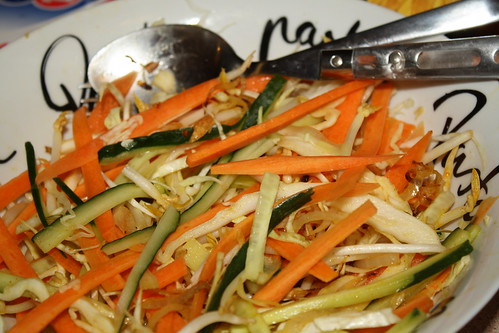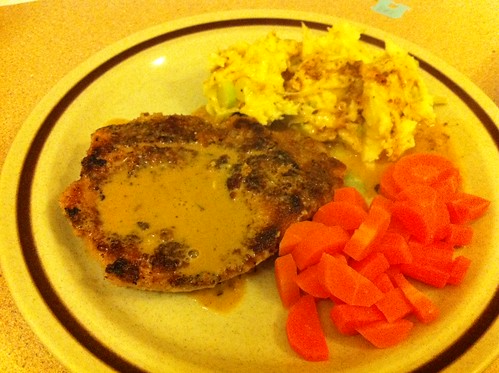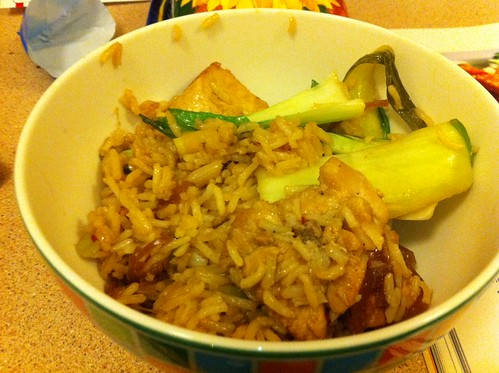Another foray into the magazine archives and something I was quite excited to come across.
This time, it’s the July 2001 issue of Food and Travel. The Swift Suppers section features recipes from Vatch’s Southeast Asian Salads: 6 salads from all over south east Asia.
I needed to work with what I knew to be readily available so I ended up combining two of the recipes: the Vietnamese grilled beef salad and a Burmese salad, thoke. Now, a quick google of thoke will bring up lots of recipes that are all completely different from what follows. What I liked about this salad was that it was different. Here in Adelaide we’re fast approaching BBQ season and mostly the repertoire of salads is pretty limited, so I like to keep an eye out for recipes that are quick to put together but that also represent a departure from a bit of lettuce, cucumber and tomato.
Let’s begin with the beef. Make a marinade by whisking together 5 tbsp of lime juice, 4 tbsp of fish sauce and 2 tbsp of sugar. Whisk until the sugar is dissolved. For a change, I actually followed these proportions because I do appreciate that in this type of food getting the salty/sweet/sour/hot balance correct is important! Once the sugar is dissolved stir in two young lemon grass stalks, very finely sliced and some finely sliced chilli. I used one small fataali chilli. As this marinade won’t be cooked, don’t be tempted to substitute chilli flakes – fresh will be much better.
Leave the marinade to stand until you need it.
When you’re ready to eat, take a piece of rump steak (approximately 500g) and cook it on a hot grill (or BBQ, or just in a hot pan) for only a minute or two on each side. You want plenty of colour on the meat but typically you want the meat nice and rare. (If you really can’t stand that idea, cook the meat to your liking). When the meat is cooked, remove from the pan, slice thinly and toss through the marinade, ensuring it’s well coated.
Leave the meat in its marinade for at least 30 minutes.
Traditionally, the meat would be served up on a salad of beansprouts, basil, mint and salad leaves. However, I knew I wouldn’t be able to track down the requisite quantities of basil and mint so I ended up tossing the meat (and marinade) through some vermicelli noodles. Tasty, but somewhat anaemic looking! Next time I’ll make the effort to put together the appropriate salad.
The thoke was easy to make: finely slice some white cabbage and cut some carrot and cucumber into fine matchsticks. Mix them together in a bowl and toss through some beansprouts.
Heat a little oil in a fry pan and fry a couple of thinly sliced garlic cloves until crisp (keep an eye on them – you want them golden but not burnt!). Drain the garlic and add to your vegetables. Finely slice half an onion and fry in the same oil until crisp, then add to the vegetables.
Sprinkle the salad with 1/2 tsp of turmeric, some chilli powder (to taste), a little salt and a very generous squeeze (or two) of lime juice. Toss everything together (you want that chilli powder to be evenly distributed) and serve.
This was really delicious – incredibly easy to make, and very fresh, crunchy and (dare I say it?) healthy. Next time you’re asked to bring a salad, give thoke a go!



